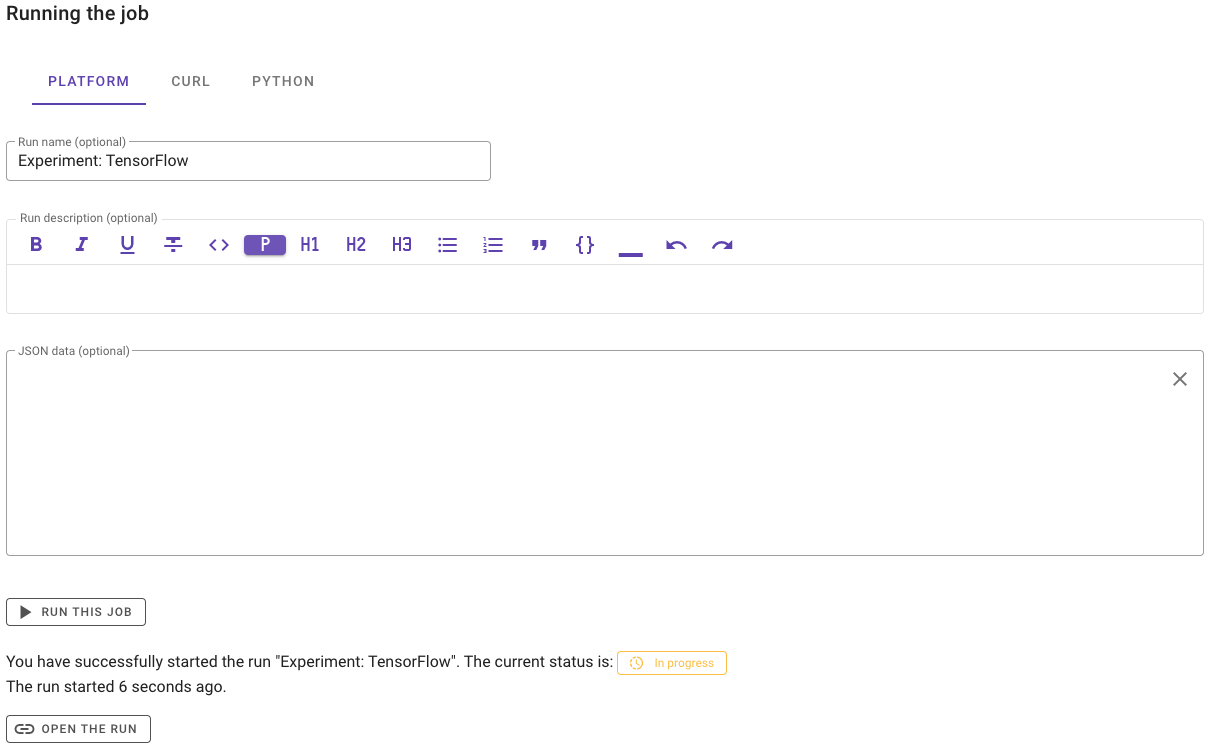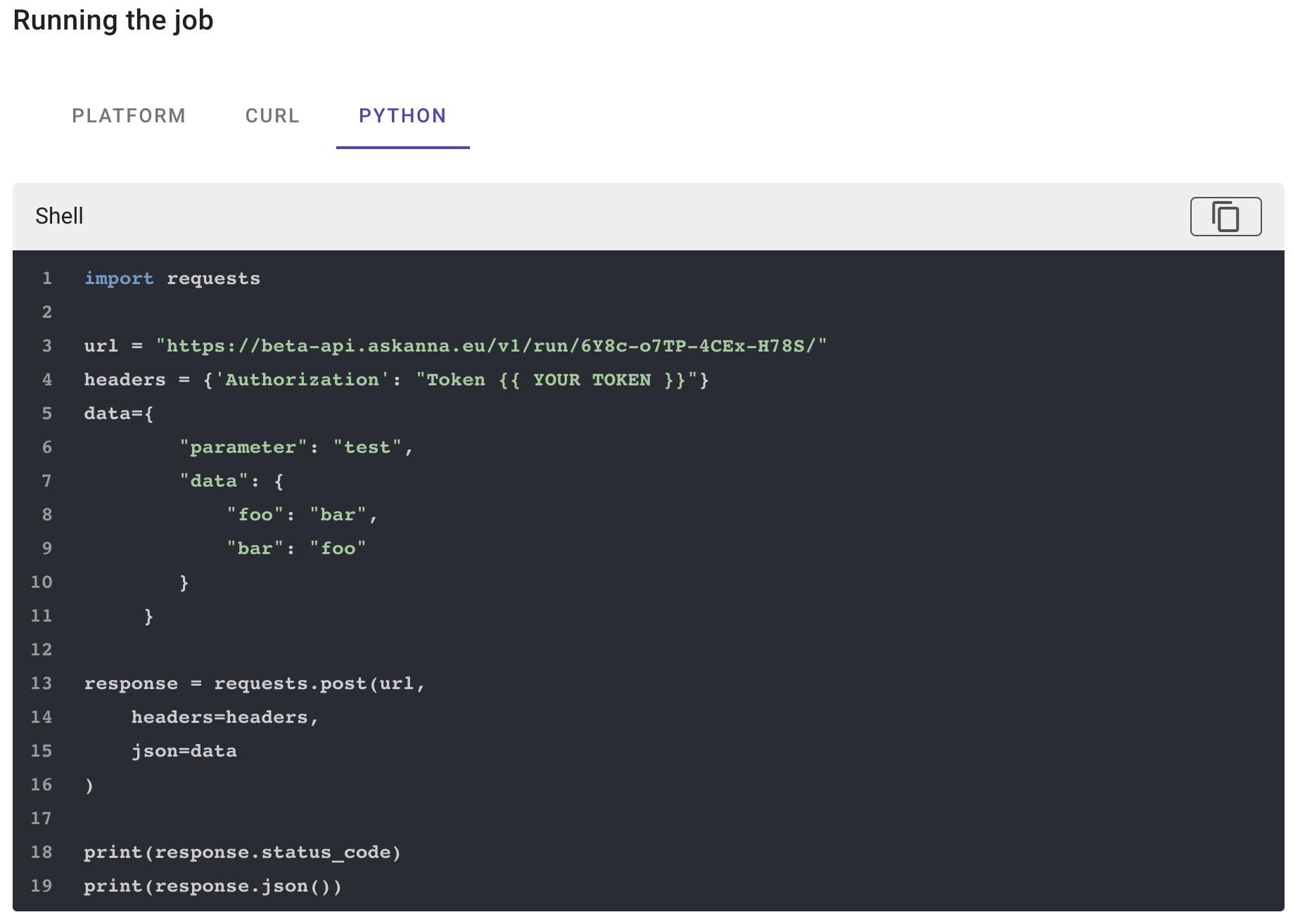Run a Job
In AskAnna you can trigger jobs using the web interface, CLI, Python SDK or API. On the job page you can find information about how you can run a job in AskAnna via the platform (web interface), curl and Python. When new options become available, we will extend the list.
If you run a job, optionally you can add some additional information:
- Name
- Description
- Input JSON data
You can give your run a name and description. The name of the run is also shown in the overview of runs and can help you to trace back a run. In the description you can add more information about the run. You can also edit this information after the run to update it with what happened during the run.
The input type we now support is JSON data. When you trigger a run, you can add JSON data as input. You can read more about how to use this input (payload) data on the page "Create a Job".
Web interface
The fastest and easiest way of triggering a job is via the web interface. On the tab PLATFORM, you can optionally provide additional information for the run:
- a name to make it easier to trace back a run
- description
- JSON data
When you run the job, you will see the status of the run and a button to open the run.
AskAnna CLI
First, install the AskAnna CLI. Now you can start a job via the command line. When you run askanna run you need to answer some questions that will help you to start a run:
askanna run
If you are running the command from a project directory with an askanna.yml and the push-target set to a valid project, the CLI will ask you which job you want to run. If this information is not available, the CLI will check whether you are a member of multiple workspaces or projects. If that's the case, a wizard guide you to select a job to run.
To make life easier, you can also specify the name of the job:
askanna run "JOB NAME"
Similar to the web interface, you can add a name and description for the run:
askanna run --name "NAME TO TRACE RUN" --description "A DESCRIPTION" "JOB NAME"
Also, you can add JSON data as a string:
askanna run --data '{"example": "payload"}' "JOB NAME"
Or JSON data from a file:
askanna run --data-file "input/payload.json" "JOB NAME"
If you want to push your code, and then run the job you can combine these tasks in one command:
askanna run --push "JOB NAME"
For more options, you can read the help:
askanna run --help
Python
AskAnna SDK
First, install the Python AskAnna SDK. Then you can run a job in your Python script using the job SUUID:
from askanna import run
run_info = run.start(job_suuid="{JOB_SUUID}")
When you run the code from a project directory with an askanna.yml and the push-target set to a valid project, you can also use the name of the job:
from askanna import run
run_info = run.start(job_name="JOB NAME")
If you want to give the run a name and add a description, you can start a run with:
from askanna import run
run_info = run.start(
job_name="JOB NAME",
name="Run name",
description="Run description"
)
It's also possible to include a dictionary with JSON data as input for the run:
from askanna import run
json_data = {"example": "payload"}
run_info = run.start(job_name="JOB NAME", data=json_data)
Request
In the tab PYTHON you can find an example of how you can use the AskAnna API to run a job in Python. When you trigger a job via Python, you can use the response for follow-up actions. For example to monitor when the run finished so you can retrieve the result.
API
You can trigger jobs using our API. You can find all the information you need on the job page in the section Running the job. For the API you will find a Shell example. In the example you see:
- The URL including the job SUUID
- Your authorization token
- An example data payload
When you copy this code, you only need to change the data (second row) and you are ready to run it via your terminal. In case you are going to work often with APIs, we advise using a software platform like Postman.
The JSON data is optional. You can also run jobs without JSON data. If you add a JSON data body to the API request, it will become available as the payload (input) for the run. This way you can add data, variables, or both.

